2016 Buick Cascada: First Look

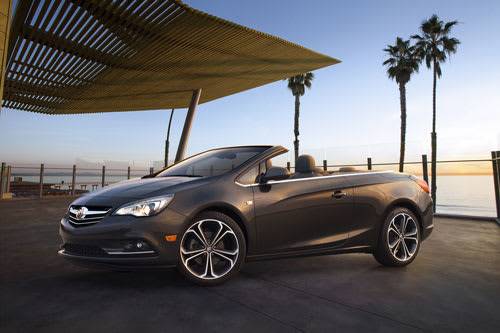
Competes with: Volkswagen Eos, Volkswagen Beetle, Ford Mustang, Chevrolet Camaro
Looks like: The spiritual successor to the old Chrysler 200 convertible
Drivetrain: 200-hp, turbocharged 1.6-liter four-cylinder; six-speed automatic transmission; front-wheel drive
Hits dealerships: Early 2016
Convertibles in the U.S. seem to come in only two flavors these days: muscle cars or expensive luxury models. The days of inexpensive convertibles for the common buyer are gone with the demise of the Chrysler 200 (nee Sebring) and Toyota Solara. If you want a four-seat convertible, you can have a rear-wheel-drive Chevrolet Camaro or Ford Mustang, or an expensive German, British or Italian luxury car. But now there’s a new arrival from Europe that may give shoppers a stylish option.
More 2015 Detroit Auto Show News
Based on the Opel of the same name, the new 2016 Buick Cascada is set to arrive in about a year, providing a unique offering in showrooms that really has no direct competition in the U.S. Under the skin, the Cascada is essentially a Buick Verano turbo with two fewer doors and a folding roof, while its bodywork looks like the latest Opel Astra. It’s a product of GM’s new global initiative with Buick in which a number of U.S.-market vehicles are sourced from Europe’s Opel division with a little rebadging and slightly different sheet metal.
Exterior
The Cascada looks dynamite, with lines and proportions that actually don’t look too different from the equally swoopy Cadillac ELR. Two long doors are broken by a crease reminiscent of other Buicks, while the taillights look lifted from the Regal sedan. The U.S. version comes standard with 20-inch wheels, which fill out the Cascada’s wheel wells quite thoroughly and lend a wide, sporty look to the convertible. Overall, the Cascada is very attractive top up or down, something not always easy to achieve with a folding cloth roof. That top descends under a hard tonneau cover in just 17 seconds at speeds up to 31 mph.
Interior
Inside, the Cascada is a cut above the Verano and Regal, with a unique dashboard and seats that are decidedly more upscale than either of the sister Buicks. The soft-touch material covering the dash wears genuine stitching, although it’s not leather. It should be pretty quiet in the Cascada with the top up as the convertible roof features several layers of insulating material designed to isolate noise and weather. Heated seats and a heated steering wheel will keep drivers warm if they decide to pop the top in cooler climes.
Buick’s IntelliLink multimedia system is standard, as is a 7-inch touch-screen residing in the center console. It’s the latest version, featuring Siri Eyes Free connectivity for Apple iPhone users and a 4G LTE WiFi hot spot for wireless devices. Access to the rear seat is made easier by an automatic entry assist system that moves the front seats forward if the seatback is tilted and then automatically returns the front seats to their original position when the seatback is pushed back upright.
Under the Hood
Powering the Cascada is a new turbocharged 1.6-liter four-cylinder engine instead of the more powerful 2.0-liter engine found in the Verano turbo. In this application it makes 200 horsepower, sending that power through a standard six-speed automatic transmission to the front wheels. That’s not an abundance of power for a vehicle certain to be heavy, given the added reinforcement and weight of the convertible components; no performance numbers were announced. The car in its European Opel form isn’t noted for speed, according to published reviews. It should handle decently, however, equipped as it is with GM’s HiPer Strut front and a Watts Z-link rear suspension. But the Cascada is not meant to be a sports car; this is a touring convertible, meant for warm-climate cruising.
Safety
And when that top is down, your safety risk does not go up — safety is assured through emergency rollover protection bars that deploy from behind the rear seats if a rollover is detected. A full suite of electronic safety items is also offered, including lane departure warning, rear park assist, a rearview camera and rain-sensing windshield wipers.
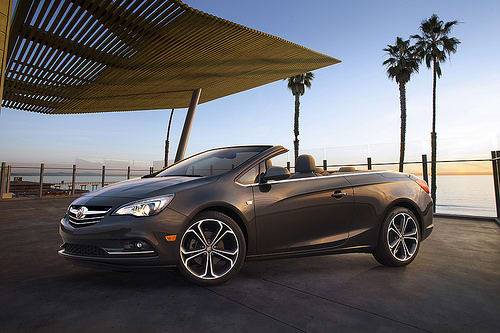
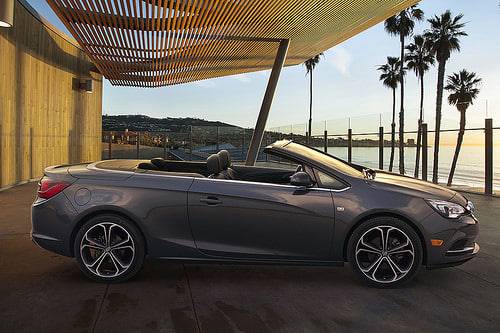
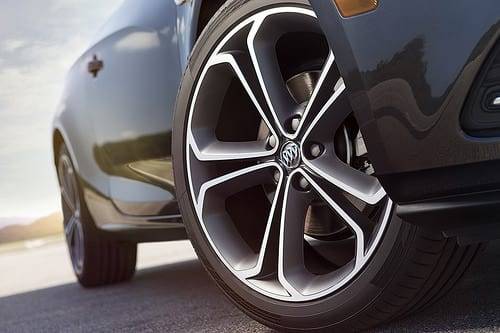
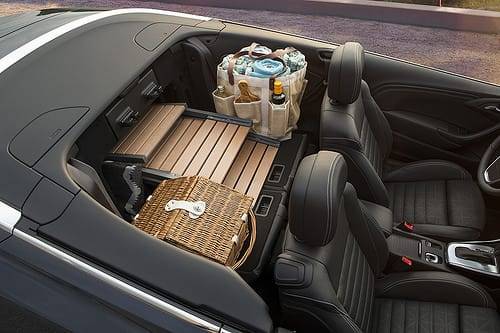

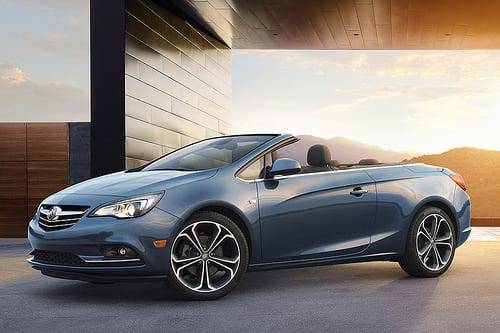
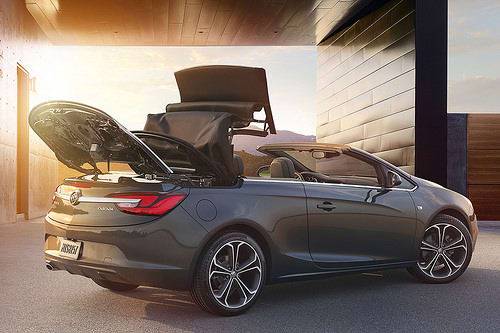
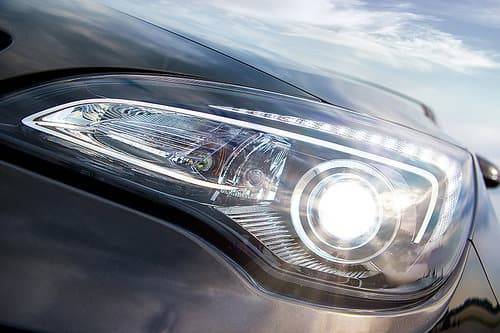
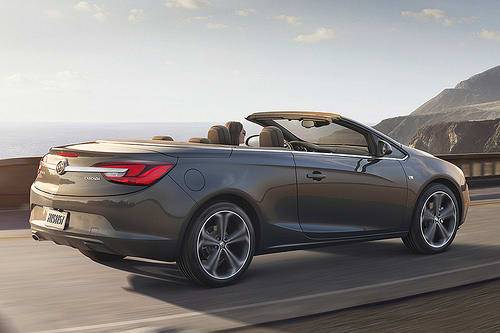
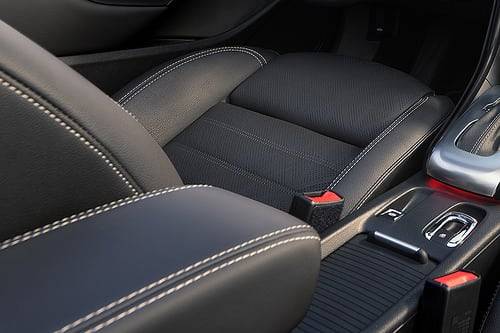
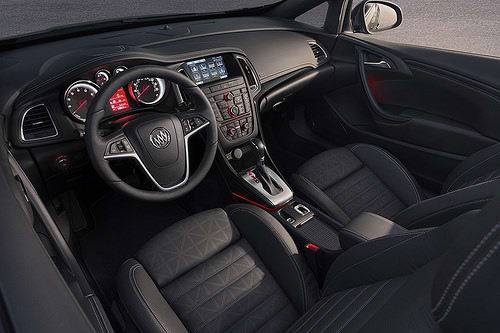
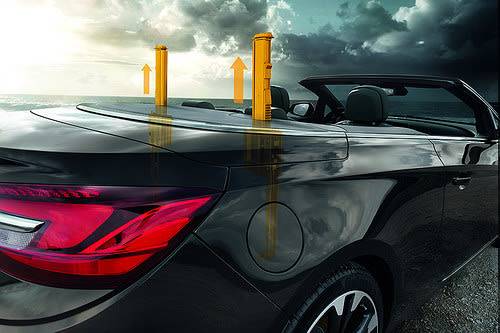
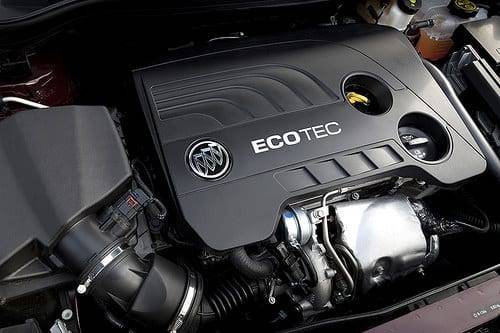
Manufacturer images

Detroit Bureau Chief Aaron Bragman has had over 25 years of experience in the auto industry as a journalist, analyst, purchasing agent and program manager. Bragman grew up around his father’s classic Triumph sports cars (which were all sold and gone when he turned 16, much to his frustration) and comes from a Detroit family where cars put food on tables as much as smiles on faces. Today, he’s a member of the Automotive Press Association and the Midwest Automotive Media Association. His pronouns are he/him, but his adjectives are fat/sassy.
Featured stories




